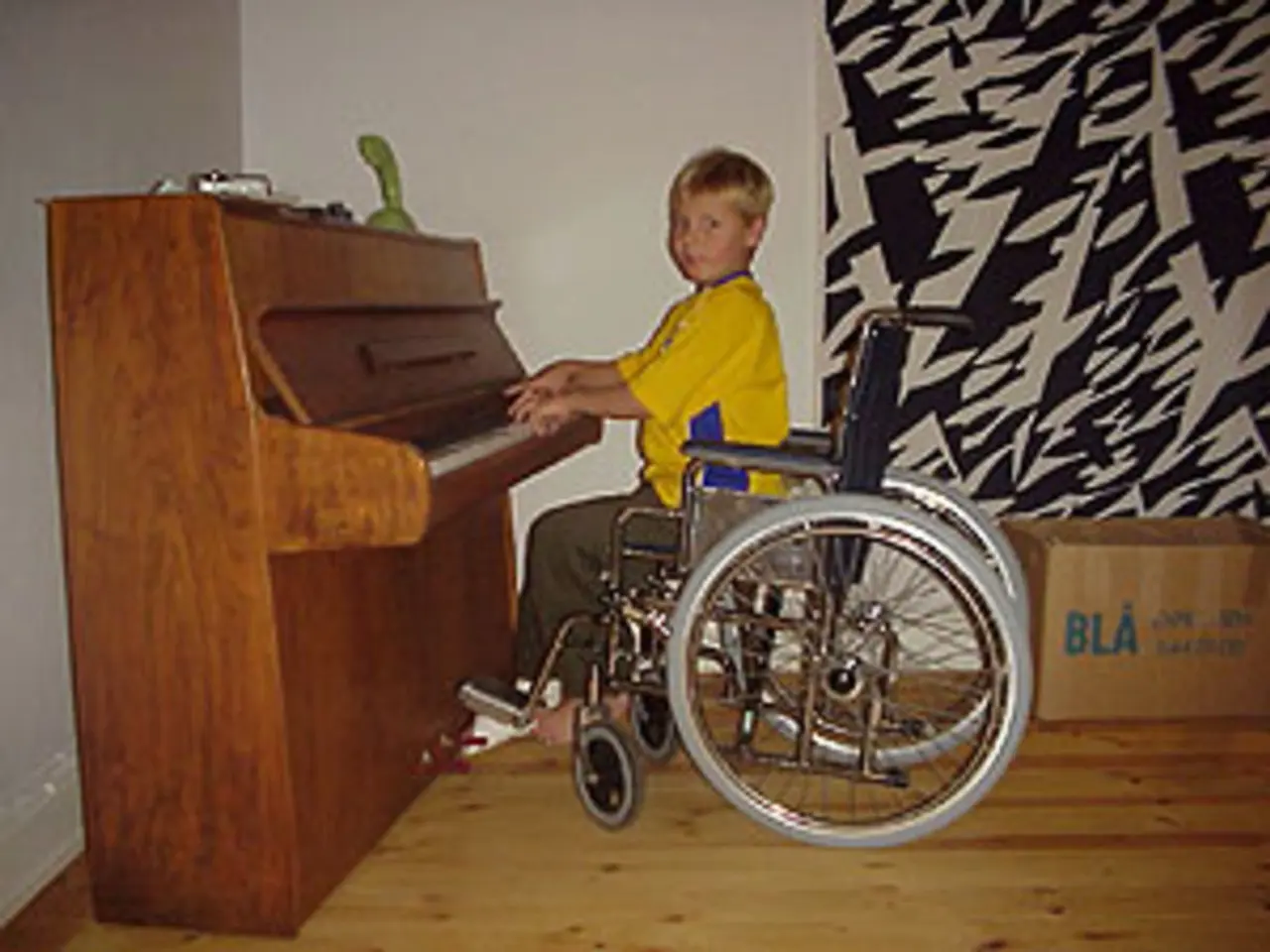Adult Autism Identification and Life Adaptation
In a world where social interactions are often complex and nuanced, adults with Autism Spectrum Disorder (ASD) can find themselves facing unique challenges. This article aims to shed light on common signs, symptoms, and effective management strategies for those on the autism spectrum.
Adults with ASD often struggle with social interaction, communication, sensory processing, and repetitive behaviours. Social difficulties can manifest in various ways, such as trouble maintaining eye contact, understanding social cues, or interpreting facial expressions, body language, or tone of voice. Communication challenges may present as speaking with an unusual intonation, echolalia (repeating words or phrases heard from others), or difficulty expressing emotions in conventional ways.
Repetitive behaviours and routines are common among adults with ASD. This can include engaging in repetitive physical movements like hand-flapping, adherence to strict routines, or having a strong focus on particular interests or subjects. Sensory sensitivities are also prevalent, with adults on the spectrum being either hypersensitive or hyposensitive to sensory stimuli like sounds, lights, textures, smells, or tastes.
Emotional and behavioural signs can include difficulty recognising or interpreting emotions of others, struggling with emotional regulation, and experiencing autistic meltdowns characterised by yelling, crying, pacing, intense stimming, or shutdown behaviours such as going silent or avoiding eye contact.
Effective management strategies for adults with ASD include social skills training and support, routine and predictability, sensory management, communication adjustments, emotional regulation techniques, and professional support. Structured programs to improve understanding of social cues, conversational skills, and emotional recognition can be beneficial. Establishing consistent daily routines and allowing flexibility gradually to build adaptability skills can also help reduce anxiety caused by unexpected changes.
Identifying and minimising exposure to sensory triggers, using sensory tools like noise-canceling headphones or sunglasses, and employing clear, direct language with minimal sarcasm or idioms can also be helpful. Teaching coping strategies such as deep breathing, mindfulness, or use of safe spaces to manage stress or sensory overload, and recognising early signs of meltdowns to intervene early and reduce their intensity are essential skills.
Professional support can take the form of counseling, occupational therapy, or cognitive behavioral therapy tailored to autism. Medication may be considered for associated issues like anxiety or depression but is not for autism itself.
In Canada, support and programs can be found at Autism Canada. In the U.S., the Autism Society National Helpline, the Asperger/Autism Network (AANE), and vocational rehabilitation services are available for support. In Australia, adult community services can be found at Autism Spectrum Australia. In the UK, help and support can be found at The National Autistic Society.
It's important to remember that managing autism in adults requires individualized approaches focusing on strengths and challenges. Early recognition of signs and consistent support can significantly improve quality of life and social functioning. While the causes of autism are not fully understood, possibilities include genetics, environment, and other biological factors.
A diagnosis of ASD in adulthood can come as a surprise, relief, or a mix of both. Living with a diagnosis of autism can provide a path to better understanding oneself and addressing common challenges such as difficulty building or maintaining relationships, social isolation, managing mood disorders, and staying organized. Support groups for adults with ASD can provide opportunities to meet people with similar experiences and gain a better understanding of the neurodiversity movement.
[1] American Psychiatric Association. (2013). Diagnostic and Statistical Manual of Mental Disorders (5th ed.). Arlington, VA: American Psychiatric Publishing. [2] National Institute of Mental Health. (2018). Autism Spectrum Disorder. Retrieved from https://www.nimh.nih.gov/health/topics/autism-spectrum-disorders-asd/index.shtml [3] Centers for Disease Control and Prevention. (2018). Data & Statistics About Autism. Retrieved from https://www.cdc.gov/ncbddd/autism/data.html [4] Baron-Cohen, S., Tager-Flusberg, H., & Lombardo, M. V. (2013). Understanding other minds: Perspectives from developmental social neuroscience. Oxford University Press. [5] Lai, M. C., Lombardo, M. V., & Baron-Cohen, S. (2014). Autism and the extreme male brain theory. Nature Reviews Neuroscience, 15(12), 809-821.
- For those navigating the complexities of health-and-wellness,mental-health considerations are essential in understanding adults with Autism Spectrum Disorder (ASD). Effective management strategies often involve tailored approaches focusing on individual sensory, communication, and social challenges.
- Delving deeper into health-and-wellness, it's crucial to acknowledge the importance of mental-health in adults with ASD. Emotional regulation techniques, professional support, and social skills training can significantly improve emotional, behavioral, and social functioning for individuals on the autism spectrum.




